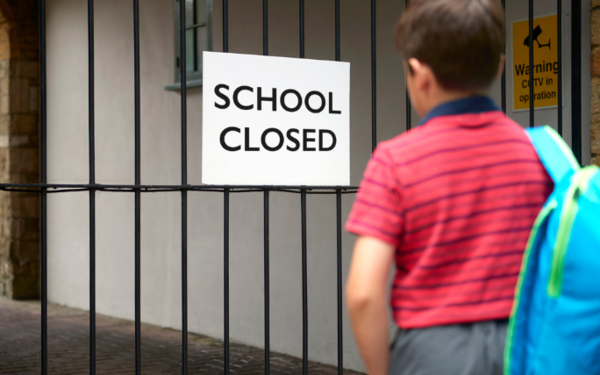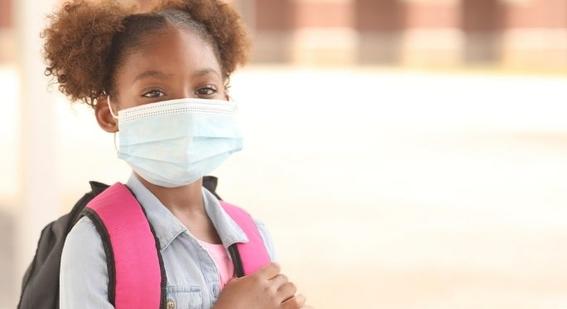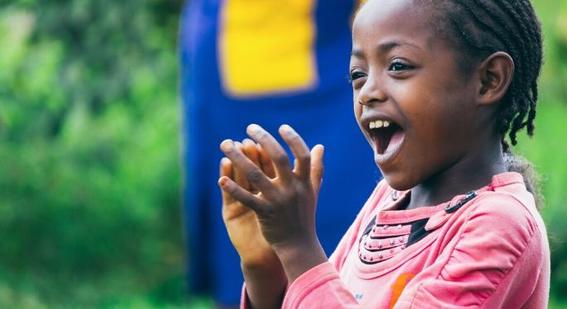The impact of school closures beyond education
So far in this series, we have looked at the role of school as places of learning, and the impact school closures have had on education and life chances for different groups of students. But schools are far more than infrastructure for education.

In 2018 I was fortunate enough to visit a girls’ school in Uttar Pradesh, a good three hours’ drive into the countryside from Delhi. The school was remarkable for many reasons – 1500 students taught by 15 teachers, no equipment or resources beyond what could be recycled or salvaged from local businesses – but something the principal described stayed with me. The school was just two years old and built in a majority-Muslim area. The vast majority of the students were Muslim, but all the teachers were Hindu. The teaching of certain topics in the curriculum had led to tension between the school and the local community. So, the principal invited the concerned parents to the school. They listened to the concerns, which were in part worsened by low levels of literacy, and explained the curriculum. From that point onwards, the school opened up on Saturdays and teachers volunteered their spare time to teach local women to write. Attitudes towards the school completely shifted, trust had been built, and it had earned a place of respect in the community.
There’s a parallel with another school I visited in Bangkok. There, teachers spent their day teaching, and their evening planning, coordinating, and running events for the local community – often working between 14 and 16 hours a day to fit in these extended duties.
Schools often play an important cohesive role in the local community. Teachers and principals are respected professionals, and often in rural communities more trusted and visible than national government. But beyond this, schools are lynchpins in national feeding and healthcare programmes, democratic processes, data gathering, and communication. What, then, are the wider implications of this extended period of school closures?
School closures and hunger
In the second post in this series we looked at how and why crises impact hardest the most disadvantaged and marginalised students. Being more likely to remain absent from school is not the only way in which school closures disadvantage these students.
Many countries use schools as a conduit for national feeding programmes. For example, in England the Free School Meals programme is benefits-related, which means that children of parents in receipt of a number of means-tested state benefits are eligible. For this reason, it is also used as a key indicator in schools performance analysis.
During the period of school closures, the Department for Education issued guidelines to schools on what food to provide, and how to provide it, for students at home. However, due to the decentralised nature of schools in England (schools are run by local education authorities or multi-academy trusts, and most schools out-source their catering function) the rapid development of the crisis and centralised issuing of interim guidance resulted in supply issues (reported here, here, and here).
Disruption in feeding programmes is a common effect of crises. During the 2014 Ebola crisis, 1.6 million children lost access to school feeding programmes (ACAPS, 2014). Much research over the years has highlighted the relationship between nutrition and education outcomes – some (World Bank, 1996) cautioning about drawing conclusions between causation and correlation. However, we should consider it likely that the combination of a loss of access to food and a straitening of financial circumstances acts as a multiplier effect on vulnerable children.
A hole in the safety net
Schools provide an essential service in safeguarding children at the individual level, as well as providing a mechanism through which the state can monitor and address issues of protection at the system level.
Child safety and wellbeing is a major concern during school closures. A rapid review of the evidence from past disease outbreaks notes the following:
The increase in home and community violence, child exploitation and labour, reported on by all NGOs, disproportionately affected the most vulnerable children (Hird et al, 2016).
Once vulnerable children are out of school, they are at significant risk of becoming ‘invisible’. That is, they lose contact with teachers, community authority figures, and the state. Even in countries where these children fall within the mandatory participation age for education, there is a significant risk that they remain off the radar once the crisis has passed.
The Ebola crisis saw a second phase of risk for children in stigmatisation (Rohwerder, 2014; Hallgarten, 2020). Cultural factors associated with those orphaned by the crisis, as well as those pregnant during the crisis, had a significant impact on reintegration into the system for vulnerable children.
Public perception of safety
Schools play an important role in the public perception of a ‘return to normal’ after a crisis (Baez, de la Fuente, Santos, 2010). But during a crisis, schools are also a vital piece of infrastructure that can be repurposed to address the most pressing needs. In warzones or natural disasters they may become field hospitals, in pandemics they may become quarantine facilities.
When open and functioning normally, schools provide a level of childcare for parents, which enables them to go out to work. It is unusual for a crisis to interrupt schooling and not industry, so the re-opening of schools plays a helpful function in freeing up parents to return to their workplaces and restarting the economy. The increased availability of and reliance on internet connectivity and computers helped many workers in tertiary industries remain productive while working remotely. However, for many of those working in primary or secondary industries, lockdowns and school closures exacerbated an already more precarious situation.
Extreme action, as we have seen governments around the world take with the Covid-19 pandemic, will colour public perception of risks. Faced with an exponential growth of cases and overwhelmed hospitals, governments had to choose between underplaying the risks or clear, unequivocal public health messaging. A World Health Organisation paper assessing the pandemic risk in 2018 commented: ‘Intense media coverage may lead populations to overreact to mild pandemics’ (Fan, Jamison, Summers, 2018).
Governments around the world are currently addressing the consequences of decisive action and clear messaging as they try to encourage the return to school. Despite being the first schools to reopen in the UK, more than 100,000 students were recorded as absent. Other systems, such as the UAE, are offering parents the choice of sending their child back to school or continuing with online learning for the first term. (A Ministry of Education survey suggested that 59% of parents would prefer to continue with online learning, indicating the scale of concern about safety in a country that recorded fewer than 400 coronavirus deaths.)
This fear affects children in two ways: firstly by keeping them out of school, even when schools re-open; secondly by increasing their need for social and emotional support on return to school (Rohwerder, 2014). The return to normal – or as close to normal as is possible – requires more than simply the reopening of schools and the resumption of learning as normal if we’re to avoid educational scarring.
In the next post in this series we will turn to look at what can be done to proactively addressing the long-term issues we have identified.




